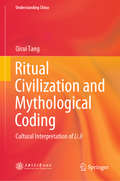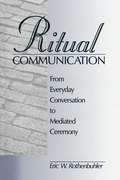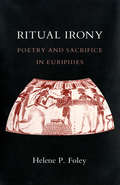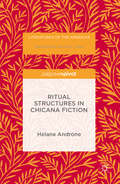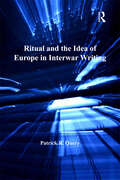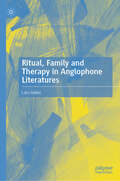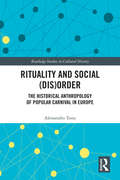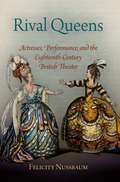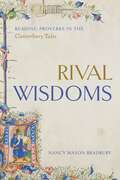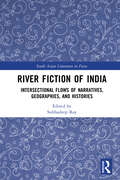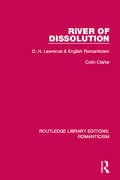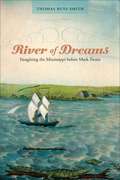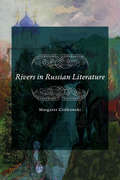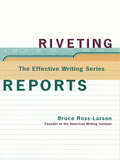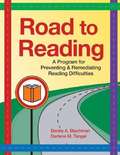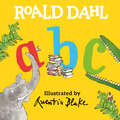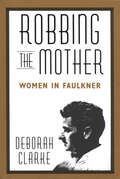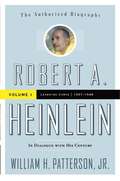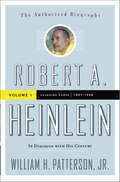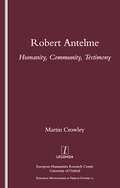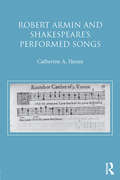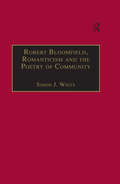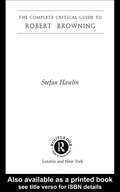- Table View
- List View
Ritual Civilization and Mythological Coding: Cultural Interpretation of Li Ji (Understanding China)
by Qicui TangThis book places Li Ji (the Book of Rites) back in the overall context of “books,” “rites” and its research history, drawing on the interrelations between myth, ritual and “materialized” symbols to do so. Further, it employs the double perspectives of “books” and “rites” to explore the sources and symbols of the capping ceremony (rites of passage), decode the prototypes of Miao and Ming Tang, and restore the discourse patterns of “people of five directions.” The book subsequently investigates the formation and function of the Yue Ling calendar and disaster ritual, so as to reveal the human cognitive encoding and metalanguage of ritual behavior involved. In the process, it demonstrates that Li Ji, its textual memories, archaeological remains and “traditional ceremony” narratives are all subject to the latent myth coding mechanism in China’s cultural system, while the “compilation” and “materialized” remains are merely forms of ritual refactoring, interpretation and exhibition, used when authority seeks the aid of ritual civilization to strengthen its legitimacy and maintain the social order.
Ritual Communication: From Everyday Conversation to Mediated Ceremony
by Eric W. RothenbuhlerCombines bibliographic essay and theory construction to provide a unique perspective on ritual as a special and powerful form of communication. Part I is a critical review of definitions of ritual from anthropology, sociology, communication studies, and other literature, ending with an essay on the contributions of communication theory to understanding ritual. Part II is a critical review of the uses of the term ritual in communication studies literature.
Ritual Irony: Poetry and Sacrifice in Euripides
by Helene P. FoleyRitual Irony is a critical study of four problematic later plays of Euripides: the Iphigenia in Aulis, the Phoenissae, the Heracles, and the Bacchae.Examining Euripides' representation of sacrificial ritual against the background of late fifth-century Athens, Helene P. Foley shows that each of these plays confronts directly the difficulty of making an archaic poetic tradition relevant to a democratic society. She explores the important mediating role played by choral poetry and ritual in the plays, asserting that Euripides' sacrificial metaphors and ritual performances link an anachronistic mythic ideal with a world dominated by "chance" or an incomprehensible divinity.Foley utilizes the ideas and methodology of contemporary literary theory and symbolic anthropology, addressing issues central to the emerging dialogue between the two fields. Her conclusions have important implications for the study of Greek tragedy as a whole and for our understanding of Euripides' tragic irony, his conception of religion, and the role of his choral odes.Assuming no specialized knowledge, Ritual Irony is aimed at all readers of Euripidean tragedy. It will prove particularly valuable to students and scholars of classics, comparative literature, and symbolic anthropology.
Ritual Structures in Chicana Fiction
by Helane AndroneThis book argues for the necessary and further examination of the sacred as it is ritualized within Chicana fiction. It suggests that religious, spiritual, linguistic and political symbolisms reveal rites that structure narrative performances of coping with and healing from trauma. Helane Androne examines these rites of spirit, service, and story as they occur in Ana Castillo's So Far From God, Denise Chávez's Face of An Angel, and Sandra Cisneros' Caramelo. Beginning with the implications of Gloria Anzaldúa's spiritual vision of Chicana identity alongside structural principles of ritual criticism, this study extends the discourse about the impact of the sacred in Chicana fiction. an>
Ritual and the Idea of Europe in Interwar Writing
by Patrick R. QueryWhile most critical studies of interwar literary politics have focused on nationalism, Patrick Query makes a case that the idea of Europe intervenes in instances when the individual and the nation negotiate identity. He examines the ways interwar writers use three European ritual forms-verse drama, bullfighting, and Roman Catholic rite-to articulate ideas of European cultural identity. Within the growing discourse of globalization, Query argues, Europe presents a special, though often overlooked, case because it adds a mediating term between local and global. His book is divided into three sections: the first treats the verse dramas of T.S. Eliot, W.B. Yeats, and W.H. Auden; the second discusses the uses of the Spanish bullfight in works by D.H. Lawrence, Stephen Spender, Jack Lindsay, George Barker, Cecil Day Lewis, and others; and the third explores the cross-cultural impact of Catholic ritual in Graham Greene, Evelyn Waugh, and David Jones. While all three ritual forms were frequently associated with the most conservative tendencies of the age, Query shows that each had a remarkable political flexibility in the hands of interwar writers concerned with the idea of Europe.
Ritual, Family and Therapy in Anglophone Literatures
by Lars HeilerThis book investigates the triadic constellations between ritual, family, and therapy in literature in English. Many rituals, so-called rites of passage in particular, are strongly associated with the changing status of individuals as members of a family unit. Traditional healing rituals were often designed to have a therapeutic effect, sometimes mentally, but also physically, whereas modern psychotherapies often include ritual elements in order to enhance the efficacy of their treatment. Families, on the other hand, can be the site of therapeutic activity by providing protection, stability, and emotional comfort; yet, difficult family constellations may also be the origin of emotional distress and the reason why a person needs counselling and therapeutic support in the first place. Modern therapies, such as family systems therapy, have expanded their range of interest and influence in order to look at the whole family unit, not just the symptomatic individual, as client. This study discusses nine literary texts—six novels, one literary memoir, and two plays—in which the three dimensions intersect and mutually influence each other.
Rituality and Social: The Historical Anthropology of Popular Carnival in Europe (Routledge Studies in Cultural History #98)
by Alessandro TestaCarnival has been described as one of the foundational elements of European culture, bearing an emblematic and iconic status as the festive phenomenon par excellence. Its origins are partly obscure, but its stratified and complex history, rich symbolic diversity, and sundry social configurations make it an exceptional object of cultural analysis. The product of more than 12 years of research, this book is the first comparative historical anthropology of popular European Carnival in the English language, with a focus on its symbolic, religious, and political dimensions and transformations throughout the centuries. It builds on a variety of theories of social change and social structures, questioning existing assumptions about what folklore is and how cultural gaps and differences take shape and reproduce through ritual forms of collective action. It also challenges recent interpretations about the performative and political dimension of European festive culture, especially in its carnivalesque declension. While presenting and exploring the most important features and characteristics of European pre-modern Carnival and discussing its origins and developments, this thorough study offers fresh evidence and up-to-date analyses about its transversal and long-lasting significance in European societies.
Rival Queens
by Felicity NussbaumIn eighteenth-century England, actresses were frequently dismissed as mere prostitutes trading on their sexual power rather than their talents. Yet they were, Felicity Nussbaum argues, central to the success of a newly commercial theater. Urban, recently moneyed, and thoroughly engaged with their audiences, celebrated actresses were among the first women to achieve social mobility, cultural authority, and financial independence. In fact, Nussbaum contends, the eighteenth century might well be called the "age of the actress" in the British theater, given women's influence on the dramatic repertory and, through it, on the definition of femininity.Treating individual star actresses who helped spark a cult of celebrity--especially Anne Oldfield, Susannah Cibber, Catherine Clive, Margaret Woffington, Frances Abington, and George Anne Bellamy--Rival Queens reveals the way these women animated issues of national identity, property, patronage, and fashion in the context of their dramatic performances. Actresses intentionally heightened their commercial appeal by catapulting the rivalries among themselves to center stage. They also boldly rivaled in importance the actor-managers who have long dominated eighteenth-century theater history and criticism. Felicity Nussbaum combines an emphasis on the celebrated actresses themselves with close analysis of their diverse roles in works by major playwrights, including George Farquhar, Nicholas Rowe, Colley Cibber, Arthur Murphy, David Garrick, Isaac Bickerstaff, and Richard Sheridan. Hers is a comprehensive and original argument about the importance of actresses as the first modern subjects, actively shaping their public identities to make themselves into celebrated properties.
Rival Wisdoms: Reading Proverbs in the Canterbury Tales
by Nancy Mason BradburyIn this elegantly written study, Nancy Mason Bradbury situates Chaucer’s last and most ambitious work in the context of a zeal for proverbs that was still rising in his day. Rival Wisdoms demonstrates that for Chaucer’s contemporaries, these tiny embedded microgenres could be potent, disruptive, and sometimes even incendiary.In order to understand Chaucer’s use of proverbs and their reception by premodern readers, we must set aside post-Romantic prejudices against such sayings as prosaic and unoriginal. The premodern focus on proverbs conditioned the literary culture that produced the Canterbury Tales and helped shape its audience’s reading practices. Aided by Thomas Speght’s notations in his 1602 edition, Bradbury shows that Chaucer acknowledges the power of the proverb, reflecting on its capacity for harm as well as for good and on its potential to expand and deepen—but also to regulate and constrict—the meanings of stories. Far from banishing proverbs as incompatible with the highest reaches of poetry, Chaucer places them at the center of the liberating interpretive possibilities the Canterbury Tales extends to its readers.Revelatory and persuasive, this book will appeal to scholars and students of medieval and early modern English literature as well as those interested in proverbs and the Canterbury Tales.
River Fiction of India: Intersectional Flows of Narratives, Geographies, and Histories (South Asian Literature in Focus)
by Subhadeep RayThis book establishes river fiction as an identifiable genre-fiction. It argues that rivers and riverbeds—through myths and legends, ecological and environmental concerns, geographical and historical realities, politics and economics around them—can provide an underlying framework to understand Indian prose fiction. With essays on river fiction across India, the volume presents a new way of understanding and reading South Asian literature. The volume will be of great interest to scholars and researchers of literature and literary criticism and South Asian studies.
River of Dissolution: D. H. Lawrence and English Romanticism (Routledge Library Editions: Romanticism #6)
by Colin ClarkeFirst published in 1969. This title concerns itself with the ambivalence of Lawrence’s attitude towards corruption. Clarke demonstrates that Lawrence’s attitude to ‘will’ and to sensational or disintegrative sex is much more equivocal than conceded. At the same time this is a study of Lawrence’s debt as a novelist to the English Romantic poets. A tradition of metaphor is traced from the second half of the eighteenth century, through the poetry of the major Romantics to the Decadents, and so to Lawrence, whose attitudes to mechanism and corruption are shown to be articulated, above all, through ambivalent images of dissolution and disintegration. This title will be of interest to students of literature.
River of Dreams: Imagining the Mississippi before Mark Twain (Southern Literary Studies)
by Thomas Ruys SmithEven in the decades before Mark Twain enthralled the world with his evocative representations of the Mississippi, the river played an essential role in American culture and consciousness. Throughout the antebellum era, the Mississippi acted as a powerful symbol of America's conception of itself -- and the world's conception of America. As Twain understood, "The Mississippi is well worth reading about." Thomas Ruys Smith's River of Dreams is an examination of the Mississippi's role in the antebellum imagination, exploring its cultural position in literature, art, thought, and national life.Presidents, politicians, authors, poets, painters, and international celebrities of every variety experienced the Mississippi in its Golden Age. They left an extraordinary collection of representations of the river in their wake, images that evolved as America itself changed. From Thomas Jefferson's vision for the Mississippi to Andrew Jackson and the rowdy river culture of the early nineteenth century, Smith charts the Mississippi's shifting importance in the making of the nation. He examines the accounts of European travelers, including Frances Trollope, Charles Dickens, and William Makepeace Thackeray, whose views of the river were heavily influenced by the world of the steamboat and plantation slavery.Smith discusses the growing importance of visual representations of the Mississippi as the antebellum period progressed, exploring the ways in which views of the river, particularly giant moving panoramas that toured the world, echoed notions of manifest destiny and the westward movement. He evokes the river in the late antebellum years as a place of crime and mystery, especially in popular writing, and most notably in Herman Melville's The Confidence-Man. An epilogue discusses the Mississippi during the Civil War, when possession of the river became vital, symbolically as well as militarily. The epilogue also provides an introduction to Mark Twain, a product of the antebellum river world who was to resurrect its imaginative potential for a post-war nation and produce an iconic Mississippi that still flows through a wide and fertile floodplain in American literature.From empire building in the Louisiana Purchase to the trauma of the Civil War, the Mississippi's dominant symbolic meanings tracked the essential forces operating within the nation. As Smith shows in this groundbreaking work, the story of the imagined Mississippi River is the story of antebellum America itself.
Rivers in Russian Literature
by Margaret ZiolkowskiRivers in Russian Literature focuses on the Russian literary and folkloric treatment of five rivers—the Dnieper, Volga, Neva, Don, and Angara. Each chapter traces, within a geographical and historical context, the evolution of the literary representation of one river. Imagination may endow a river with aesthetic or spiritual qualities; ethnic, national, or racial associations; or commercial or agricultural symbolism of many kinds. Russian literary responses to these five rivers have much to tell us about the society that produced them as well as the rivers they treat.Distributed for UNIVERSITY OF DELAWARE PRESS
Riveting Reports (The Effective Writing Series)
by Bruce Ross-LarsonWhether you are composing a Web page on the Internet or agonizing over an annual budget report, these books are the key to clarity, accuracy, and economy in any writing task. Covers everything from the first spark of inspiration to the final draft. Writers will see how a series of careful questions will lead them to the messages of their reports, and will learn how to let those messages drive the structure of the piece. From this foundation they will be able to create a paragraph-by-paragraph plan of their entire report. A final chapter explains the author's techniques for editing reports of any length.
Road Trip East
by AbekaWhether hiking through the Allegheny National Forest in Pennsylvania or visiting the 9/11 Memorial in New York City, students are in for an exciting adventure in Road Trip East. <p><p>As they travel the four regions east of the Mississippi River, students will appreciate classic poetry by Robert Frost and illustrations by Robert Lawson, explore geographical land-scapes and historical monuments, and delight in heartwarming historical fiction and nonfiction narratives. <p><p>A variety of selections will aid in building knowledge of literary concepts. In addition, students will analyze elements of poetry such as repetition, meter, and rhyme scheme as well as the compare-contrast text structure. Students will begin to recognize, analyze, and write selections that compare and contrast two topics. Throughout the reading of this book students will be challenged to analyze the material and draw conclusions from it with thinking questions marked with an asterisk.
Road Trip West
by AbekaStudents will encounter inspiring native legends, daring cowboy tales, and heart-warming American classics on their Road Trip West. Travel to majestic mountains, sparkling shores, peaceful plains, and dusty deserts West of the Mississippi with the Daniels family on their thrilling Road Trip West.
Road to Reading: A Program for Preventing and Remediating Reading Difficulties
by Benita A. Blachman Darlene M. TangelRoad to Reading provides a framework for providing both early intervention to prevent reading difficulties and remedial instruction for students who are struggling to learn to read.
Roald Dahl ABC
by Roald DahlLearn the alphabet with Roald Dahl, the World&’s No. 1 Storyteller! This deluxe board book is the perfect way to learn the alphabet. Featuring beloved art created by Quentin Blake from Roald Dahl&’s classic books, this is perfect for libraries, the youngest classrooms, and baby shower gifts to start a child&’s bookshelf.
Robbing The Mother: Women in Faulkner
by Deborah ClarkeWilliam Faulkner claimed that it may be necessary for a writer to “rob his mother,” should the need arise. “If a writer has to rob his mother, he will not hesitate; the ‘Ode on a Grecian Urn’ is worth any number of old ladies,” he remarked. This study of Faulkner's paradoxical attitude toward women, particularly mothers, will stimulate debate and concern, for his novels are shown here to have presented them as both a source and a threat to being and to language. “My reading of Faulkner,” the author says, “attempts more than an identification of female stereotypes and an examination of misogyny, for Faulkner, who almost certainly feared and mistrusted women, also sees in them a mysterious, often threatening power, which is often aligned with his own creativity and the grounds of his own fiction.” Drawing on both American and French feminist criticism, Robbing the Mother explores Faulkner's artistic vision through the maternal influence in such works as The Sound and the Fury; As I Lay Dying; Sanctuary; Absalom, Absalom!; The Hamlet; Light in August; and The Wild Palms.
Robert A. Heinlein: Learning Curve
by William H. Patterson Jr.Robert A. Heinlein (1907-1988) is generally considered the greatest American science fiction writer of the 20th century. A famous and bestselling author in later life, he started as a navy man and graduate of Annapolis who was forced to retire because of tuberculosis. A socialist politician in the 1930s, he became one of the sources of Libertarian politics in the USA in his later years. His most famous works include the Future History series (stories and novels collected in The Past Through Tomorrow and continued in later novels), Starship Troopers, Stranger in a Strange Land, and The Moon is a Harsh Mistress. Given his desire for privacy in the later decades of his life, he was both stranger and more interesting than one could ever have known. This is the first of two volumes of a major American biography. This volume is about Robert A. Heinlein's life up to the end of the 1940s and the mid-life crisis that changed him forever.
Robert A. Heinlein: Learning Curve, 1907–1948 (Robert A. Heinlein)
by William H. Patterson Jr.For the first time, the real story of the life of Robert A. Heinlein in the authorized biography Robert A. Heinlein (1907-1988) is generally considered the greatest American SF writer of the 20th century. A famous and bestselling author in later life, he started as a navy man and graduate of Annapolis who was forced to retire because of tuberculosis. A socialist politician in the 1930s, he became one of the sources of Libertarian politics in the USA in his later years. His most famous works include the Future History series (stories and novels collected in The Past Through Tomorrow and continued in later novels), Starship Troopers, Stranger in a Strange Land, and The Moon is a Harsh Mistress. Given his desire for privacy in the later decades of his life, he was both stranger and more interesting than one could ever have known. This is the first of two volumes of a major American biography. This volume is about Robert A. Heinlein's life up to the end of the 1940s and the mid-life crisis that changed him forever.At the Publisher's request, this title is being sold without Digital Rights Management Software (DRM) applied.
Robert Antelme: Humanity, Community, Testimony
by Martin Crowley"Best known for his 1947 memoir L'Espece humaine, Robert Antelme (1917-1990) is a central figure in the history of the European response to the Nazi concentration camps. In this first study in any language to be devoted to Antelme's work, Martin Crowley reveals the author's vital yet insufficiently recognized influence on recent thought in France and elsewhere about such questions as the nature of community and the indivisibility of humanity. He explores the conclusions Antelme drew from his deportation and his involvement with the post-war French left, and provides the first detailed textual criticism of L'Espece humaine. Examining the responses to the author's writing by such figures as Blanchot, Perec, Agamben, Nancy and Derrida, Crowley demonstrates Antelme's key contribution to the development of modern European thought."
Robert Armin and Shakespeare's Performed Songs
by Catherine A. HenzeAfter Robert Armin joined the Chamberlain's Men, singing in Shakespeare's dramas catapulted from 1.25 songs and 9.95 lines of singing per play to 3.44 songs and 29.75 lines of singing, a virtually unnoticed phenomenon. In addition, many of the songs became seemingly improvisatory—similar to Armin's personal style as an author and solo comedian. In order to study Armin's collaborative impact, this interdisciplinary book investigates the songs that have Renaissance music that could have been heard on Shakespeare's stage. They occur in some of Shakespeare's most famous plays, including Much Ado About Nothing, Twelfth Night, Hamlet, and The Tempest. In fact, Shakespeare's plays, as we have them, are not complete. They are missing the music that could have accompanied the plays’ songs. Significantly, Renaissance vocal music, far beyond just providing entertainment, was believed to alter the bodies and souls of both performers and auditors to agree with its characteristics, directly inciting passions from love to melancholy. By collaborating with early modern music editor and performing artist Lawrence Lipnik, Catherine Henze is able to provide new performance editions of seventeen songs, including spoken interruptions and cuts and rearrangement of the music to accommodate the dramatist's words. Next, Henze analyzes the complete songs, words and music, according to Renaissance literary and music primary sources, and applies the new information to interpretations of characters and scenes, frequently challenging commonly held literary assessments. The book is organized according to Armin's involvement with the plays, before, during, and after the comic actor joined Shakespeare's company. It offers readers the tools to interpret not only these songs, but also vocal music in dramas by other Renaissance playwrights. Moreover, Robert Armin and Shakespeare's Performed Songs, written with non-specialized terminology, provides a gateway to new areas of research and interpretation in an increasingly significant interdisciplinary field for all interested in Shakespeare and early modern drama.
Robert Bloomfield, Romanticism and the Poetry of Community (The Nineteenth Century Series)
by Simon J. WhiteRobert Bloomfield, whom John Clare described as 'the most original poet of the age,' was a widely read and critically acclaimed poet throughout the first decade of the nineteenth century, and remained popular until the beginning of the twentieth century. Yet until now, no modern critic has undertaken a full-length study of his poetry and its contexts. Simon J. White considers the relationship between Bloomfield's poetry and that of other Romantic poets. For example, her argues that Wordsworth's poetics of rural life was in some respects a response to Bloomfield's The Farmer's Boy. White considers Bloomfield's emphasis on the importance of local tradition and community in the lives of labouring people. In challenging the idea that the formal and rhetorical innovation of Wordsworth and Coleridge was principally responsible for the emergence of a new kind of poetry at the turn of the eighteenth century, he also shows that it is impossible to understand how the lyric and the literary ballad evolved during the Romantic period without considering Bloomfield's poetry. White's authoritative study demonstrates that, on the contrary, Bloomfield's poetry was pivotal in the development of Romanticism.
Robert Browning (Routledge Guides to Literature)
by Stefan HawlinAccessibly written throughout, this guidebook covers biographical details, information on the historical and social contexts of Browning's work, an overview of the full range of his work and a survey of the major critical debates surrounding him and his work.
